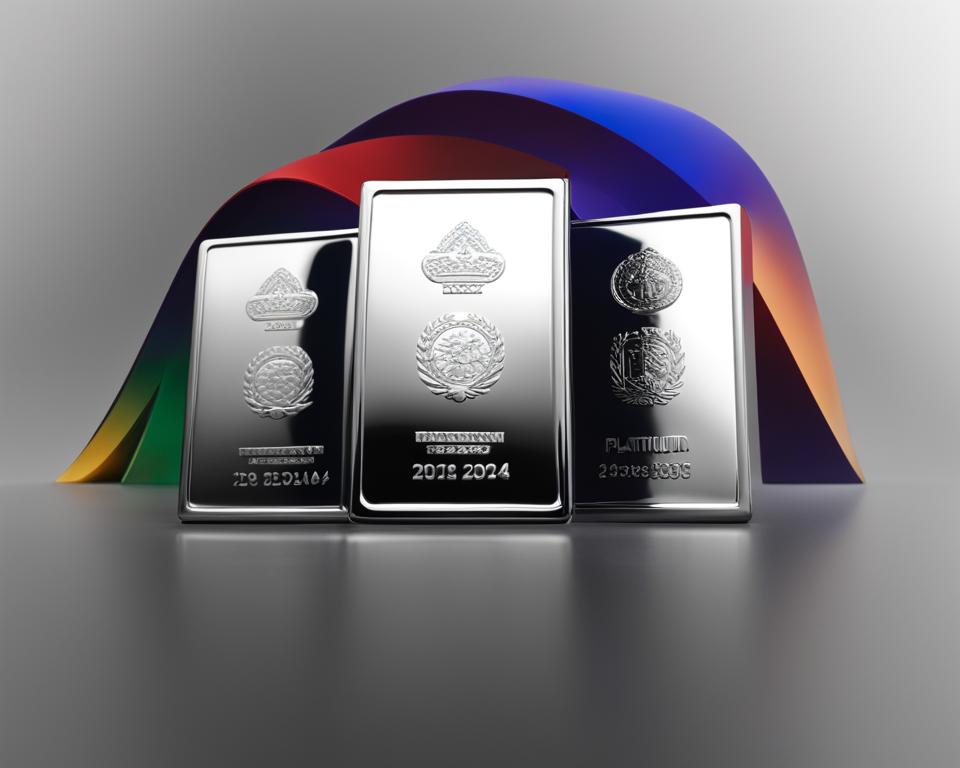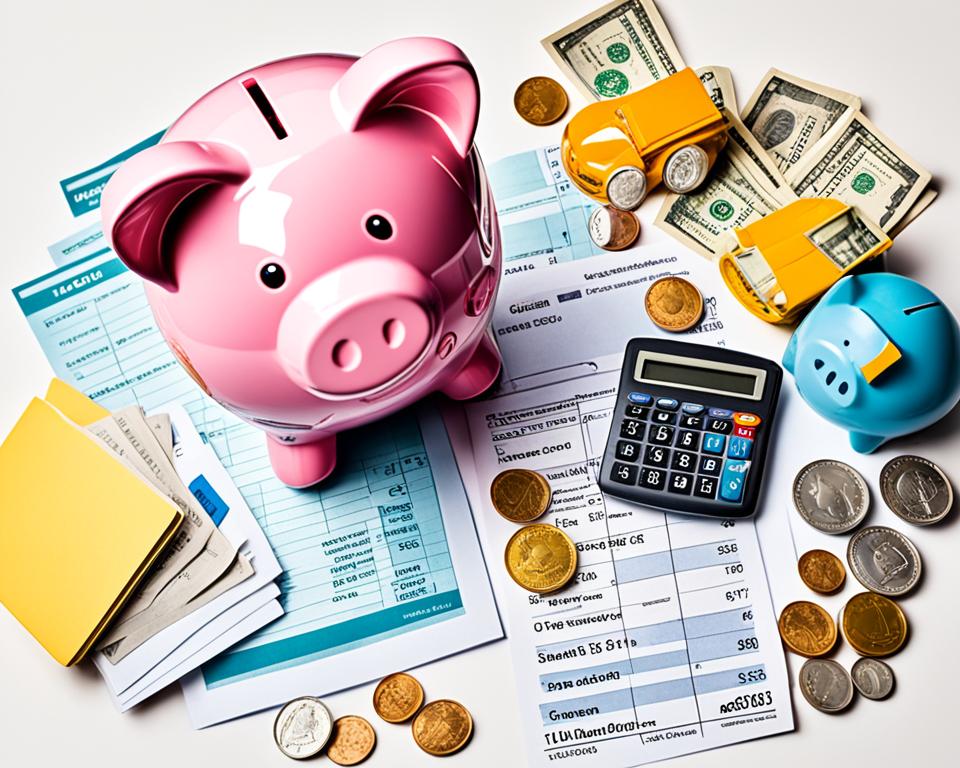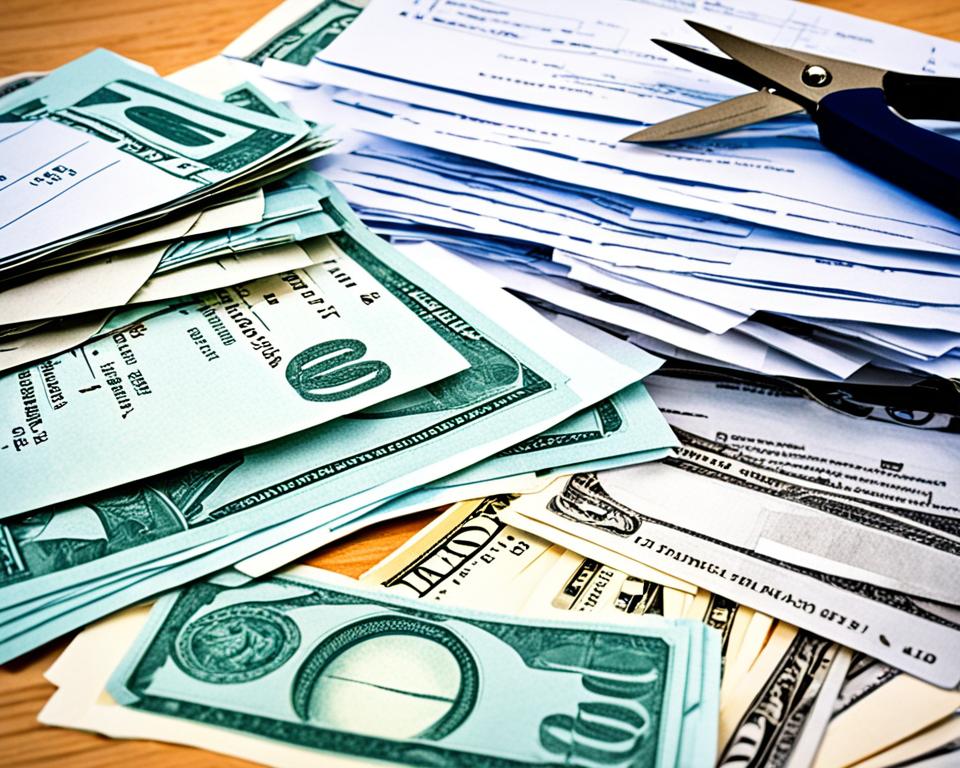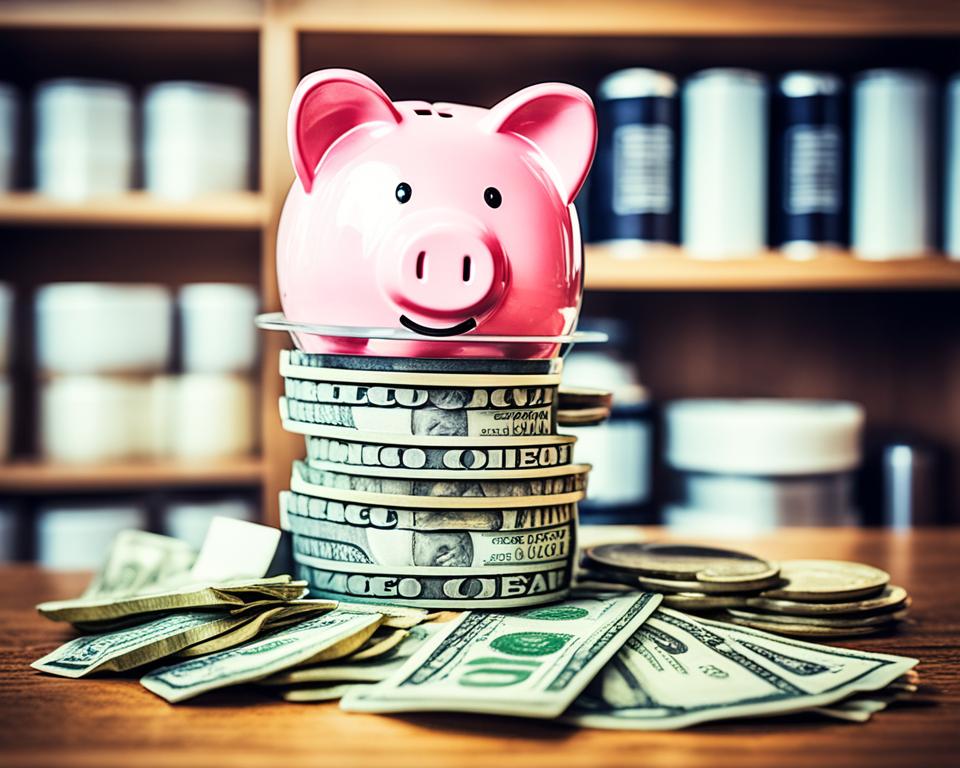When it comes to investing in precious metals, there are several options to consider. While gold is the most well-known choice, investors should also be aware of silver, platinum, and palladium. Each precious metal has its own unique characteristics, advantages, and drawbacks.
It’s important to evaluate these factors and consider your financial goals and risk tolerance before making a decision. MoneyWatch offers valuable insights into the world of precious metal investments.
Key Takeaways
- Gold, silver, platinum, and palladium are popular choices for precious metal investments.
- Gold is a reliable store of value but does not generate income.
- Silver is affordable and has various industrial applications but can be more volatile in price.
- Platinum has extensive industrial applications and potential long-term value but comes with higher price volatility.
- Palladium is used in catalytic converters and offers impressive price gains but lacks historical data for reliable predictions.
The Pros and Cons of Gold Investment
When it comes to investing in precious metals, gold is often the first choice that comes to mind. With a long history as a reliable store of value, gold has proven its worth over centuries, making it a popular investment option for many. However, it’s important to consider the pros and cons before making any investment decisions.
Benefits of Investing in Gold
- Hedging against economic uncertainties and inflation: Gold has the potential to act as a hedge against economic downturns and inflation. It serves as a safe haven investment during times of market volatility and can help protect and preserve wealth.
- Liquidity and ease of trading: Gold is highly liquid and can be easily bought or sold in various forms, such as bars, coins, or Exchange-Traded Funds (ETFs). This allows investors to quickly convert their gold holdings into cash if needed.
- Diversification benefits: Including gold in a well-balanced investment portfolio can provide diversification benefits. It has a low correlation with other asset classes, such as stocks and bonds, which can help reduce overall portfolio risk.
Drawbacks of Investing in Gold
- No income generation: Unlike stocks or bonds that can generate income through dividends or coupon payments, gold does not generate any income. Its value primarily relies on price appreciation, making gold more suitable as a long-term investment rather than a source of current income.
- Price volatility: Gold prices can be subject to significant fluctuations in the short term. While gold has shown resilience and long-term price growth, investors should be prepared for periods of volatility in the market.
Exploring the Advantages of Silver Investment
Silver, an affordable precious metal with diverse industrial applications, offers several advantages for investors. Let’s delve into why you should consider including silver in your investment portfolio and the factors that impact its value.
1. Hedge Against Inflation
Silver can serve as a reliable hedge against inflation, preserving your wealth during periods of rising prices. Its intrinsic value and historical use as a form of currency make it a tangible asset that holds its worth over time.
2. Industrial Demand
Silver’s industrial uses, particularly in sectors like electronics, solar energy, and healthcare, contribute to its market demand. As technological advancements continue, the demand for silver in various industries is expected to grow, potentially driving its value up.
3. Price Volatility
While silver has the potential for significant price appreciation, it’s important to note that silver prices tend to be more volatile compared to other precious metals like gold. Economic downturns and fluctuations in supply and demand can impact its value.
4. Portfolio Diversification
Investing in silver can offer diversification benefits for your portfolio. Its performance doesn’t always align with other asset classes, such as stocks or bonds, making it a valuable addition to balance risk and potentially enhance returns.
5. Global Market Influence
The silver market is influenced by various factors, including global economic trends, industrial demand, and geopolitical events. Staying informed about these influences can help you make informed investment decisions.
Investing in silver provides an opportunity to benefit from its unique characteristics as a precious metal while considering its market dynamics and potential risks.
Comparison of Key Precious Metals
| Key Factors | Gold | Silver | Platinum | Palladium |
|---|---|---|---|---|
| Rarity | ✓ | ✓ | ✓ | |
| Industrial Uses | ✓ | ✓ | ✓ | |
| Inflation Hedge | ✓ | ✓ | ✓ | ✓ |
| Price Volatility | ✓ | ✓ | ✓ | ✓ |
| Diversification Benefits | ✓ | ✓ | ✓ | ✓ |
Table: Comparison of key factors among gold, silver, platinum, and palladium.
Considering the advantages and market dynamics of silver can help you make informed investment decisions and create a well-diversified portfolio.
Considering the Potential of Platinum Investment
Platinum is a precious metal that offers unique opportunities for investment. With extensive industrial applications, particularly in the automotive and jewelry industries, platinum continues to be in high demand.
Platinum’s rarity sets it apart from other precious metals like gold and silver, which may contribute to its long-term value potential. As a limited resource, platinum’s scarcity can drive up prices and provide investors with an opportunity for significant returns.
Investing in platinum can also diversify your precious metals portfolio, reducing risk and creating a well-balanced investment strategy. The inclusion of platinum alongside gold and silver can help safeguard your investments against market fluctuations.
However, it’s important to note that platinum prices can be highly volatile. Economic factors, such as changes in supply and demand, can impact platinum’s value. Investors should carefully monitor market trends and consider their risk tolerance before making investment decisions.
Furthermore, compared to gold and silver, platinum investment options are relatively limited. This limited availability can make it more challenging for investors to access platinum investment opportunities.
Despite these challenges, the platinum market is expected to show growth in the coming years. According to market forecasts for 2024, platinum prices are projected to increase due to rising demand from industries like automotive manufacturing, where the metal is essential for catalytic converters.
To gain a better understanding, let’s take a closer look at the historical price trends of platinum:
| Year | Average Annual Price |
|---|---|
| 2017 | $967 |
| 2018 | $862 |
| 2019 | $945 |
| 2020 | $894 |
| 2021 | $1,138 |
Source: Platinum Price Forecast 2024.
By staying informed about current platinum market conditions and trends, you can make well-informed decisions regarding your platinum investments.
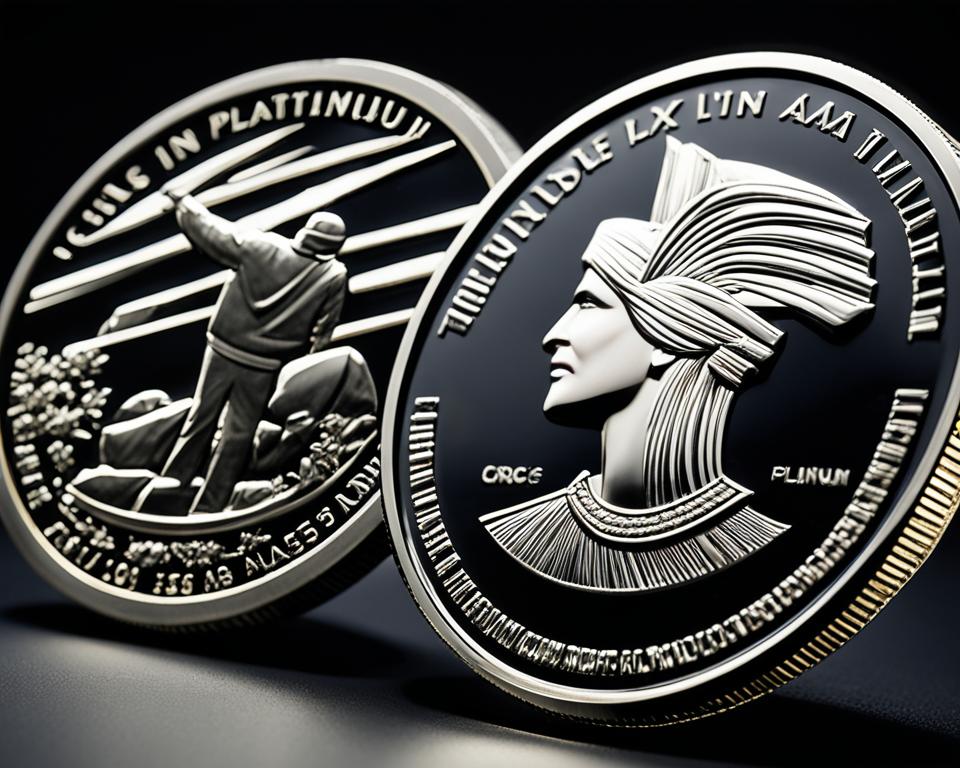
The Benefits and Drawbacks of Palladium Investment
When it comes to investing in precious metals, palladium often takes a backseat to its more popular counterparts like gold and silver. However, this lesser-known precious metal has its own set of advantages and considerations for investors to weigh.
Impressive Price Gains and Industrial Importance
Palladium has gained significant attention in recent years, primarily due to its critical role in catalytic converters. As stricter emissions standards are implemented worldwide, the demand for palladium in the automotive industry has surged, leading to impressive price gains.
The Limited Historical Data Challenge
One of the key drawbacks of palladium investment is the limited historical data available. Unlike gold or silver, which have been traded for centuries, palladium’s market history is relatively short. This lack of historical data can make it more challenging to predict its performance and assess its long-term potential. Investors must carefully evaluate this factor and consider their risk appetite before investing in palladium.
Dependency on Industrial Demand and Economic Fluctuations
Palladium’s value is closely tied to industrial demand, particularly in the automotive sector. As the global economy experiences fluctuations, shifts in industrial demand can impact the price of palladium. Economic downturns or changes in regulations affecting the automotive industry can negatively affect palladium’s value. Investors seeking to invest in palladium should closely monitor industrial trends and economic indicators to make informed decisions.
The Benefits and Drawbacks of Palladium Investment
| Benefits | Drawbacks |
|---|---|
| Potential for impressive price gains | Limited historical data |
| Diversification opportunity in a precious metals portfolio | Dependency on industrial demand |
| Used in critical industrial applications | Vulnerability to economic fluctuations |
Advantages of Investing in Precious Metals
Investing in precious metals can offer several advantages that make them an attractive option for investors. Whether you’re considering gold, silver, platinum, or palladium, these precious metals can play a valuable role in your investment portfolio. Here are some of the key advantages of investing in precious metals:
Hedge against Inflation
One of the primary benefits of investing in precious metals is their ability to act as a hedge against inflation. Unlike paper currencies, precious metals have intrinsic value and tend to hold their worth over time. Inflation erodes the purchasing power of fiat currencies, but precious metals have a history of retaining their value and even appreciating during periods of rising prices.
Tangible Asset
Precious metals are tangible assets that you can physically hold and own. They offer a level of security and stability compared to purely digital investments like stocks or cryptocurrencies. Owning physical precious metals allows you to diversify your holdings and have a tangible asset that can provide a sense of security during uncertain economic times.
Portfolio Diversification
Including precious metals in your investment portfolio can help diversify your holdings. Precious metals often have a low correlation with traditional investments like stocks and bonds. This means that when other asset classes decline in value, precious metals can act as a hedge, helping to protect and stabilize your portfolio.
Sellability
Precious metals are highly liquid assets, meaning they can be easily bought and sold. This makes them a valuable investment that can quickly be converted into cash when needed. In times of financial uncertainty or emergencies, being able to sell your precious metals can provide a valuable source of liquidity.
When considering investing in precious metals, it’s important to conduct thorough research and seek advice from financial experts. Understanding market trends and forecasts, such as the platinum market analysis 2024, can help inform your investment decisions. Keep in mind that while precious metals offer many advantages, they also come with potential risks and drawbacks that should be carefully considered.
Platinum, in particular, has gained attention as a safe haven investment due to its extensive industrial applications and relatively limited supply compared to gold and silver. However, platinum prices can be volatile, and it’s essential to stay informed about market trends and analysis to make informed investment choices.
In the next section, we will explore the disadvantages and risks of investing in precious metals to provide a comprehensive understanding of this investment option.
Disadvantages and Risks of Investing in Precious Metals
While investing in precious metals can offer unique advantages, it’s important to be aware of the potential disadvantages and risks associated with this type of investment. Understanding these factors can help you make informed decisions and mitigate any potential drawbacks.
Storage and Insurance Costs
One of the main considerations when investing in physical precious metals is the cost of storage and insurance. Unlike stocks or bonds, which can be held electronically, precious metals require physical storage. This can add to the expenses of holding these assets, especially if you are investing in large quantities or bulky items like gold bars.
Lack of Income Generation
Precious metals, such as platinum, do not generate income like stocks or bonds. They are primarily seen as a store of value and a hedge against inflation. While the value of these metals may appreciate over time, investors should be aware that they will not receive regular income or dividends from their precious metal investments.
Price Volatility and Market Correlation
Price volatility is another risk associated with investing in precious metals, including platinum. The prices of these metals can fluctuate significantly in response to various market factors, such as economic conditions, geopolitical events, and investor sentiment. Additionally, precious metal prices can be correlated with other markets, such as currencies and equities, which can increase the volatility of your portfolio.
Impact of Cryptocurrency
The rise of cryptocurrency, such as Bitcoin, has introduced a new digital asset class that competes with traditional investments like precious metals. The increasing popularity of cryptocurrencies could potentially impact investor demand for precious metals, leading to changes in their value and market dynamics. It’s important to consider the evolving landscape of investment options and assess how different asset classes may interact with each other.
“Investing in precious metals carries certain risks and uncertainties that investors should carefully evaluate. Factors like storage costs, lack of income generation, price volatility, and the impact of cryptocurrency should be considered before making any investment decisions.” – Investopedia
| Disadvantages and Risks | Solutions and Mitigation |
|---|---|
| Storage and Insurance Costs | Consider alternative forms of investment, such as paper-based precious metal investments, to reduce storage and insurance expenses. |
| Lack of Income Generation | Build a diversified investment portfolio that includes income-generating assets, such as stocks or bonds, alongside precious metal investments. |
| Price Volatility and Market Correlation | Allocate only a portion of your investment portfolio to precious metals and regularly rebalance your portfolio to manage risk. |
| Impact of Cryptocurrency | Stay informed about emerging investment trends and regularly assess the potential impact of cryptocurrency on the precious metal market. Diversify your investments across different asset classes to mitigate the risk of any single investment. |
By carefully considering the potential disadvantages and risks of investing in precious metals, including platinum, you can make informed decisions and manage your investments effectively. It’s essential to evaluate these factors alongside the potential benefits and market dynamics before committing your capital.
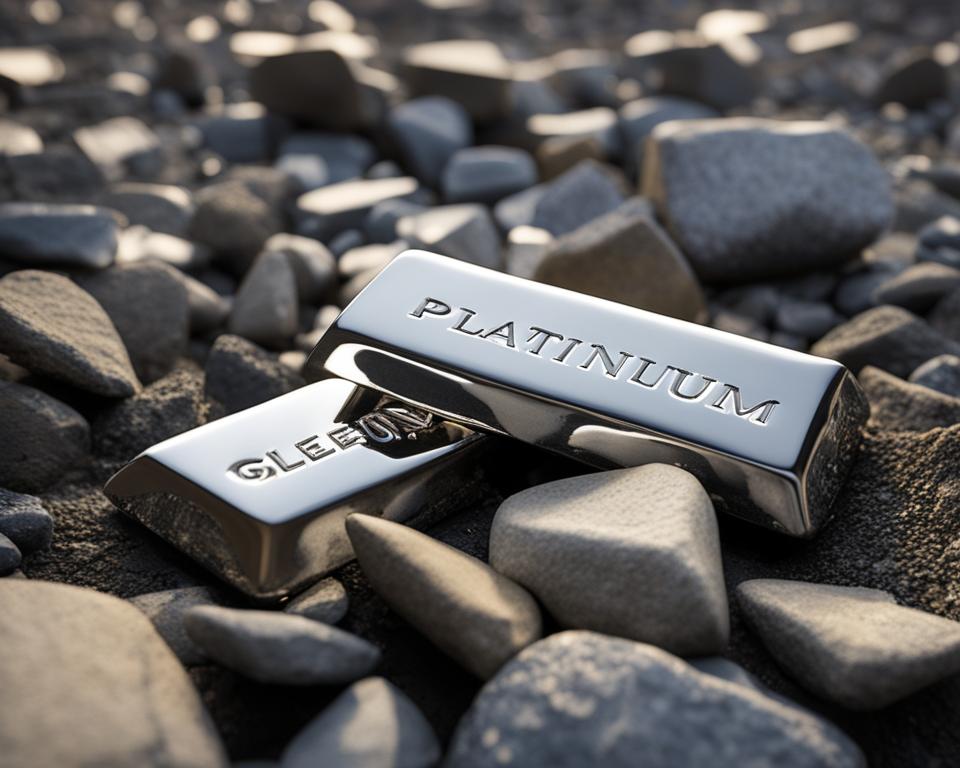
Different Ways to Invest in Precious Metals
When it comes to investing in precious metals, there are various options available. Whether you are interested in platinum, gold, silver, or other precious metals, understanding the different investment avenues is crucial to making informed decisions. Here, we explore some of the common methods for investing in precious metals:
- Purchasing Physical Coins and Bars: One popular way to invest in precious metals is by buying physical coins and bars. These tangible assets provide a sense of ownership and can be stored securely. Additionally, they offer the flexibility of being easily bought or sold when desired.
- Investing in Mining Company Stocks and Mutual Funds: Another approach is to invest in mining company stocks or mutual funds that focus on precious metals. This option allows investors to gain exposure to the overall performance of the industry while diversifying their portfolio.
- Buying Precious Metals-Based ETFs: Precious metals-based exchange-traded funds (ETFs) provide a convenient way to invest in a diversified basket of precious metals. These funds typically track the prices of different metals and offer liquidity for investors.
- Trading Futures Contracts: Futures contracts provide a more advanced approach to investing in precious metals. In this method, investors agree to buy or sell a specific amount of a metal at a set price on a predetermined future date. Trading futures contracts requires knowledge of the commodities market and may involve higher risks.
- Utilizing Individual Retirement Accounts (IRAs): Some individuals choose to include precious metals in their retirement savings by utilizing self-directed IRAs. By holding physical metals within the IRA, investors can benefit from potential tax advantages while diversifying their retirement portfolio.
Every investment method has its own advantages and considerations. Before deciding which approach to take, carefully evaluate your investment goals, risk tolerance, and level of familiarity with the precious metals market. Doing thorough research and consulting with a financial advisor can help you make well-informed investment decisions.
Remember, investing in precious metals should be viewed as a long-term strategy and not a short-term speculative endeavor. It’s essential to stay updated on market trends, consider historical performance, and seek professional guidance to navigate the complexities of the precious metals market.
Best Precious Metals to Consider for Investment
When considering specific precious metals investments, you may want to explore stocks of companies focused on gold, silver, platinum, and palladium. These stocks offer exposure to different precious metals and can be part of a well-diversified portfolio. Some top precious metals stocks to consider include:
- First Majestic Silver: A leading silver mining company.
- Franco-Nevada: A royalty and streaming company with diversified exposure to gold, silver, and other metals.
- Newmont Mining: One of the largest gold mining companies globally.
- Sibanye-Stillwater: A South African producer of gold and platinum group metals.
- Wheaton Precious Metals: A company engaged in the sale of precious metal streams and royalties.
These companies have a proven track record in the precious metals industry and offer potential investment opportunities in gold, silver, platinum, and palladium. By investing in these stocks, you can gain exposure to different precious metals and diversify your portfolio. Remember to conduct thorough research and consider your investment goals before making any investment decisions.
Image: Investing in precious metals can provide diversification and investment opportunities. Consider exploring stocks of companies focused on gold, silver, platinum, and palladium. (Image source: Image provided by seowriting.ai)
Conclusion
When considering investment opportunities, the world of precious metals offers compelling options for diversification and protection against inflation. Gold, silver, platinum, and palladium each present unique characteristics and factors to evaluate before making a decision. It is crucial to conduct thorough research and analysis to fully understand the benefits and risks associated with investing in these precious metals.
Platinum, in particular, stands out as an intriguing investment option. With its extensive industrial applications, especially in the automotive and jewelry industries, platinum offers the potential for long-term value. As a rarer metal compared to gold and silver, it presents unique opportunities for investors seeking diversification.
However, it is important to note that investing in platinum, like any other precious metal, comes with its own considerations. Platinum prices can be highly volatile, and there are limited investment options available compared to gold and silver. Therefore, it is essential to carefully weigh the pros and cons and consult with a financial advisor before making any investment decisions.
In summary, a well-balanced investment portfolio can benefit from the inclusion of precious metals. While platinum holds promise as a safe haven investment in 2024 and beyond, investors should evaluate their individual financial goals and risk tolerance before deciding to invest. By carefully considering all options and diversifying their portfolios, investors can maximize the benefits and mitigate the risks associated with investing in precious metals.
FAQ
Should I invest in platinum in 2024?
Investing in platinum can be a viable option for diversifying a portfolio. However, it is essential to thoroughly research the platinum market forecast and consider your own financial goals and risk tolerance before making any investment decisions.
What are the benefits of investing in platinum?
Investing in platinum offers several advantages. It is a rare precious metal with extensive industrial applications, particularly in the automotive and jewelry industries. Platinum can provide portfolio diversification and potentially act as a safe haven investment.
What are the pros and cons of gold investment?
Gold has been a reliable store of value for centuries, offering a hedge against economic uncertainties and inflation. It is highly liquid and provides diversification benefits. However, gold doesn’t generate income and can be subject to price volatility.
Why should I consider silver investment?
Investing in silver can offer advantages such as affordability, industrial applications, and a historical role as a form of currency and wealth preservation. However, silver prices can be more volatile than gold, and its value can be affected by economic downturns.
What are the potential opportunities in platinum investment?
Platinum investment opportunities exist due to its rarity and industrial applications. It has the potential for higher long-term value compared to gold and silver. However, platinum prices can be highly volatile, and the range of investment options is more limited compared to other precious metals.
What are the benefits and drawbacks of investing in palladium?
Palladium has impressive price gains in recent years, primarily due to its use in catalytic converters. It offers exposure to industrial demand, but historical data is limited, making predictions more challenging. The market for palladium is not as emphasized by investors as other precious metals.
What are the advantages of investing in precious metals?
Investing in precious metals can act as a hedge against inflation, provide tangible assets, and offer portfolio diversification. Precious metals often perform at or above the inflation rate and can be readily sold for cash.
What are the disadvantages and risks of investing in precious metals?
Some disadvantages of investing in precious metals include storage and insurance costs, the lack of income generation, price volatility, correlation with other markets, and potential competition from cryptocurrencies.
What are the different ways to invest in precious metals?
There are various methods to invest in precious metals, including purchasing physical coins and bars, investing in mining company stocks and mutual funds, buying precious metals-based ETFs, trading futures contracts, and utilizing individual retirement accounts (IRAs).
What are the best precious metals to consider for investment?
When considering precious metals investments, it is essential to evaluate companies focused on gold, silver, platinum, and palladium. Some top precious metals stocks include First Majestic Silver, Franco-Nevada, Newmont Mining, Sibanye-Stillwater, and Wheaton Precious Metals.
Are platinum investments a good choice in 2024?
The decision to invest in platinum in 2024 depends on various factors. It is crucial to conduct thorough research, assess the platinum market forecast, and consider your investment goals and risk tolerance before making any decisions.

